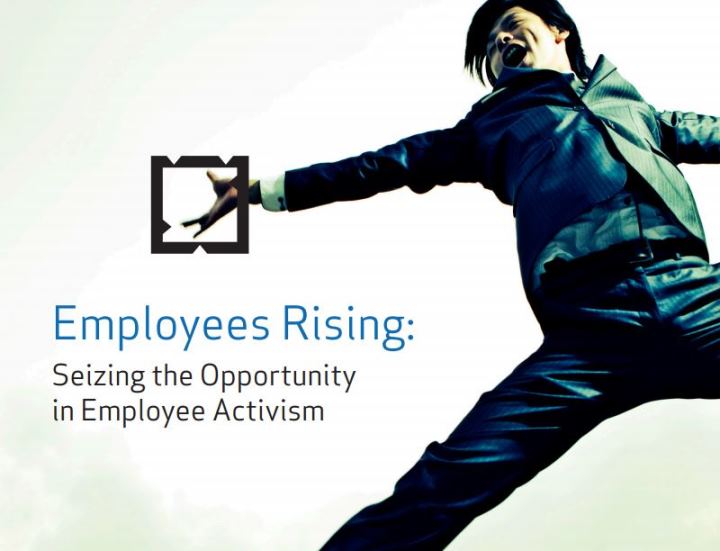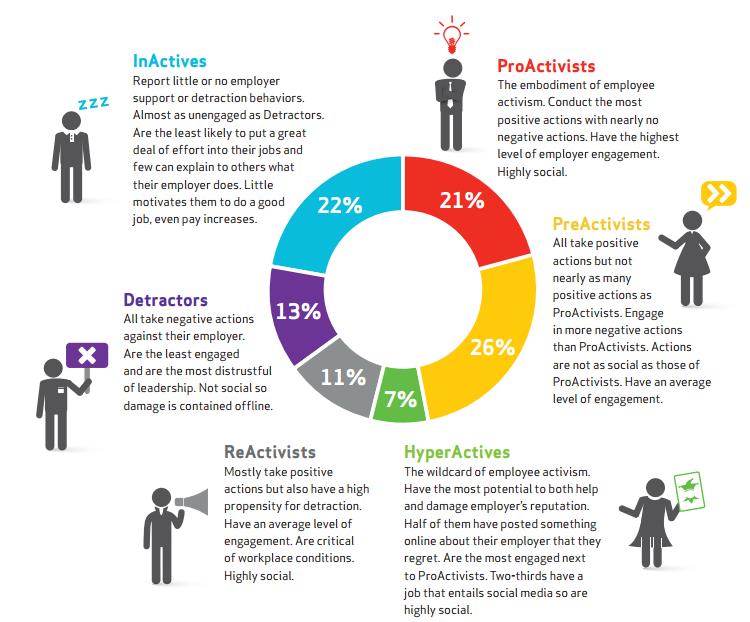A young woman works for what she says is an “awesome company,” but after two years, during which she’s worked long hours and “sacrificed my relationships, time and energy” for a boss who she thinks doesn’t value her work, she quits. This is not an exceptional case…until you watch the video above.
Employees have always been the foundation of successful companies, and they have always spoken to their friends, family, and acquaintances about their jobs. But in an era when everything is social, both online and off, employees have huge impact on company reputation.
To study this trend, Weber Shandwick partnered with KRC to survey 2,300 employees in 15 countries. We found that employee activists, who “make their engagement visible, defend their employers from criticism and act as active advocates, online and off,” are becoming a huge portion of the workforce. In fact, 1 in 5 employees is a “ProActivist,” a social employee who takes a lot of actions to support his or her employer and is highly engaged. ProActivists tend to be college-educated millennials who use social media for work. ProActivists act as brand ambassadors and can even protect their employers during a crisis.
But not everyone is a ProActivist. KRC and Weber Shandwick uncovered five other types of employees: PreActivists, HyperActives, ReActivists, InActives, and Detractors.
Marina Shifrin, the woman responsible for “An Interpretive Dance For My Boss Set To Kanye West’s Gone,” could have been a great candidate to be a ProActivist: a college-educated millennial who used social media for her job, Marina had a great opportunity to speak out about the benefits of working at for her company. And Marina even calls them “awesome,” noting that when she first got this job that allowed her to put her comedic voice into her writing, “I loved it!”
But Marina also uses her personal blog to talk about the sadness she experiences at her job. She remains highly active on social media, but her engagement level clearly declines. Marina is the perfect example of a ReActivist, who is critical of workplace conditions and doesn’t express much trust in leadership (and with her boss, in particular). Before Marina announced her resignation in a YouTube video seen more than 18 million times, her employer could have taken a number of steps to take the edge off her criticism, including, as noted by Weber Shandwick, competing on a “Best Places to Work” list (like our DC officemates Powell Tate) or managing leadership concerns.
Fortunately, with the right tools, employers can learn from past experiences and bring a number of employee segments together to create ProActivists. Weber Shandwick’s Employees Rising report provides a playbook for helping all six segments achieve their activism potential. And Next Media Animation, Marina’s former employer, certainly wasn’t going to be left behind. What do you think of their response?










